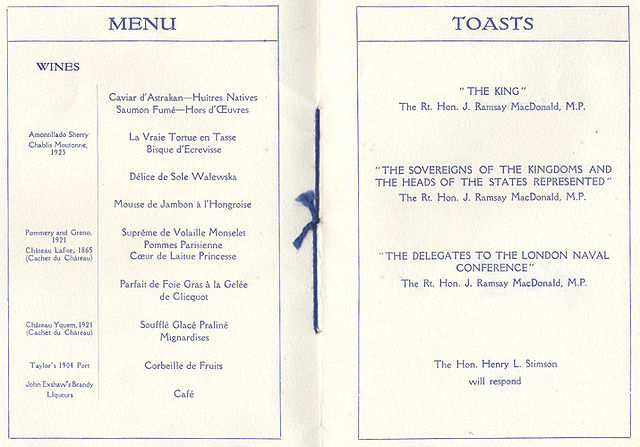The London Naval Treaty, officially the Treaty for the Limitation and Reduction of Naval Armament, was an agreement between the United Kingdom, Japan, France, Italy, and the United States that was signed on 22 April 1930. Seeking to address issues not covered in the 1922 Washington Naval Treaty, which had created tonnage limits for each nation's surface warships, the new agreement regulated submarine warfare, further controlled cruisers and destroyers, and limited naval shipbuilding.
Members of the United States delegation en route to the conference, January 1930
Menu and List of Official Toasts at formal dinner which opened the London Naval Conference of 1930
The Washington Naval Treaty, also known as the Five-Power Treaty, was a treaty signed during 1922 among the major Allies of World War I, which agreed to prevent an arms race by limiting naval construction. It was negotiated at the Washington Naval Conference in Washington, D.C. from November 1921 to February 1922 and signed by the governments of the British Empire, United States, France, Italy, and Japan. It limited the construction of battleships, battlecruisers and aircraft carriers by the signatories. The numbers of other categories of warships, including cruisers, destroyers, and submarines, were not limited by the treaty, but those ships were limited to 10,000 tons displacement each.
Signing of the Washington Naval Treaty (1922).
Akagi (Japanese ship originally planned as a battlecruiser but converted during construction to an aircraft carrier) in April 1925.
HMS Hawkins, lead ship for her class of heavy cruisers alongside a quay, probably during the interwar period
Japanese denunciation of the Washington Naval Treaty, 29 December 1934






